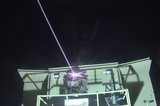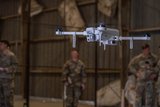US military could start new nanotech tests by 2023
Graphene material (Photo Credits: AMD)
The US federal government has awarded UK-based SME Advanced Material Development (AMD) a contract to develop protective films to be applied to laser protective eyewear.
The contract with the Irregular Warfare Technical Support Directorate (IWTSD) will allow AMD to develop unique multi-frequency layered meta-material films and coatings based on its photonic crystal superlattices.
Although financial details of the contract remain undisclosed at the time of writing, AMD stated that the technology provides a ‘low-cost’ and ‘tuneable’ solution.
Defence applications include fitting on wearable vision systems, electro-optic protection from cameras and anti-laser dazzle.
In an interview with Shephard, Alan Dalton,
Already have an account? Log in
Want to keep reading this article?
More from Defence Notes
-
![Leonardo unveils plans for Michelangelo air defence dome]()
Leonardo unveils plans for Michelangelo air defence dome
The new multi-layered defence system will harness AI to neutralise airborne threats and protect Europe from Russian aggression.
-
![What will next-gen counter-UAS capabilities for the US look like?]()
What will next-gen counter-UAS capabilities for the US look like?
Future US counter-uncrewed aerial system solutions are likely to require a flexible, multi-layered approach to tackle a broad spectrum of new threats as they emerge.
-
![Elbit Systems awarded $2.3 billion contract as results soar]()
Elbit Systems awarded $2.3 billion contract as results soar
The company’s order backlog as of 30 September totalled $25.2 billion and more than a third of this is scheduled to be fulfilled before the end of 2026.
-
![US military foresees growing use of 3D printing]()
US military foresees growing use of 3D printing
Advanced manufacturing has evolved to meet military requirements and now supports multiple US critical assets, including Arleigh Burke-class destroyers, F-18, F-22, F-35, Bradley, HMMWV and Patriot.
























